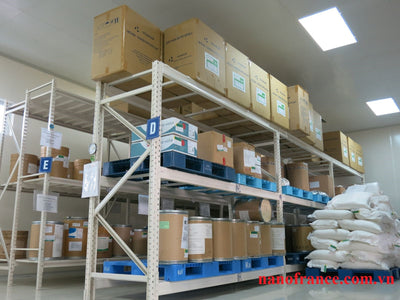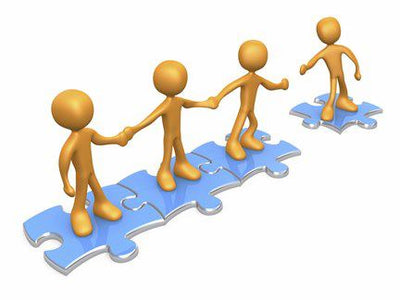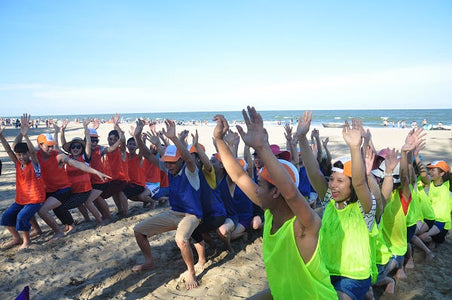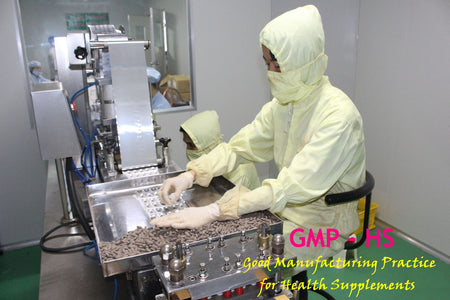Treatment of osteoporosis
Define
Osteoporosis, which means “porous bones,” means bones become weak and brittle – even minor movements like bending over or coughing can cause a fracture. In many cases, bones become weak when there is low calcium and other minerals in the bones.
A common result of osteoporosis is a fracture, most often in the hip, spine or wrist. Although often thought of as a woman's disease, osteoporosis also affects men. And in addition to people with osteoporosis, many others have low bone density, putting them at risk of developing osteoporosis.
It's never too late or too early to do something about osteoporosis. Steps can be taken to keep bones strong and healthy throughout life.
Symptoms
In the early stages of bone loss, there is usually no pain or other symptoms. But as bones become weakened by osteoporosis, signs and symptoms of osteoporosis may include:
Back pain, which can be severe, as a result of a fractured or collapsed vertebra.
Loss of height over time.
Always bowed.
Fracture of the spine, hip, wrist or other bone.
Because osteoporosis rarely causes signs or symptoms until it is severe, doctors recommend bone density testing if you are:
Women older than 65 years or men older than 70 years, regardless of risk factors.
Postmenopausal women with at least one risk factor for osteoporosis.
Men aged 50-70 years with at least one risk factor for osteoporosis.
Older than 50 years of age with history of fracture.
Taking medications, such as prednisone, aromatase inhibitors, or anti-seizure medications, has been linked to osteoporosis.
Postmenopausal women who have recently stopped hormone therapy.
Women go through early menopause.
Reason
Scientists still don't know exactly why osteoporosis occurs, but they do know that the bone remodeling process is disrupted.
Bones are constantly changing, new bone is made and old bone is reabsorbed. When you are young, your body creates new bone faster than it breaks down old bone, increasing bone mass. Peak bone mass is reached around age 30. After that, bone continues to be remodeled, but you lose more than you gain.
How likely you are to develop osteoporosis depends on how much bone mass you achieve in your 20s and early 30s and how much you lose later. The higher your peak bone mass, the less likely you are to develop osteoporosis as you age.
The strength of a bone depends on its size and density; bone density depends in part on the amount of calcium, phosphorus, and other minerals the bone contains. When bones contain less minerals than normal, they become less strong and eventually lose their supportive internal structure.
Other factors, such as hormone levels, also affect bone density. In women, bone loss increases significantly when estrogen levels drop at menopause. In men, low estrogen and testosterone levels can cause a loss of bone mass.
Risk factors
Several factors can increase your chances of developing osteoporosis, some of which you can change, others of which you cannot.
Modifiable risk factors
Low calcium. Calcium deficiency plays a major role in the development of osteoporosis. Low calcium contributes to decreased bone density, premature bone loss, and increased risk of fractures.
Tobacco use. The role tobacco plays in osteoporosis is not clear, but researchers do know that tobacco use contributes to weak bones.
Eating disorders. Women and men with anorexia or bulimia nervosa are at higher risk of low bone density.
Sedentary lifestyle. People who spend a lot of time sitting are at higher risk of osteoporosis than those who are active. Any type of exercise is good for your bones, but walking, running, jumping, dancing, and weightlifting seem to be particularly helpful in building healthy bones.
Drinking too much alcohol. Regularly consuming more than two drinks a day increases the risk of osteoporosis, possibly because alcohol can interfere with the ability to absorb calcium.
Corticosteroids. Long-term use of corticosteroids, such as prednisone, cortisone, and dexamethasone, can damage bones. These medications are common treatments for chronic conditions such as rheumatoid arthritis, asthma, and lupus, and it may not be possible to stop taking them to reduce the risk of osteoporosis. If a steroid medication is needed long-term, your doctor should monitor your bone density and recommend other medications to help prevent bone loss.
Other medications. Long-term use of aromatase inhibitors used to treat breast cancer, antidepressants called selective serotonin reuptake inhibitors (SSRIs), the cancer drug methotrexate, some anti-seizure medications, acid-blocking drugs called proton pump inhibitors, and aluminum-containing antacids have been linked to an increased risk of osteoporosis.
Non-modifiable risk factors
Women. Osteoporotic fractures are almost twice as common in women as in men.
Older age. The older you are, the greater your risk of osteoporosis.
Race. The risk of osteoporosis is greatest in people of white or Asian descent.
Family history. Having a parent or sibling with osteoporosis puts you at greater risk, especially if there is a family history of fractures.
Frame size. Men and women in particular, with a body mass index of 19 or less or with a small body frame, are often at higher risk because they may have less bone mass.
Thyroid hormones. Too much thyroid hormone can also cause bone loss. This can happen either because of an overactive thyroid (hyperthyroidism), or because of thyroid hormone medications used to treat hypothyroidism.
Medical problems and procedures can affect bone health. Gastric bypass surgery and weight-loss surgery can affect the body’s ability to absorb calcium. So can problems such as Crohn’s disease, celiac disease, hyperparathyroidism, and Cushing’s disease – a rare disorder in which the adrenal glands produce too much adrenal hormone.
Complications
Fractures are the most common and serious complication of osteoporosis. They usually occur in the spine or hip – the bones that directly support weight. Fractures are often caused by falls. Although most people respond well to modern surgical treatment, hip fractures can cause disability and even death due to post-operative complications, especially in older people. Wrist fractures from falls are also common.
In some cases, a spinal fracture can occur. The bones in the back (vertebrae) can become weakened and begin to compress or collapse. Compression fractures can cause severe pain and require long-term recovery. If many bones are compressed like this, the bones can lose height and become stooped.
Testing and Diagnosis
Doctors often diagnose osteoporosis by measuring bone density.
Dual energy X-ray absorption
The best screening test is dual-energy X-ray absorptiometry (DXA). This procedure is quick, simple, and accurate. It measures bone density in the hip, spine, and wrist, areas most likely to be affected by osteoporosis, and it is used to accurately track changes in these bones over time.
Accurate tests that can measure bone density include
Supersonic.
Quantitative computed tomography (CT).
Single-photon absorption.
Treatment and medication
Medicine
Several medications are available to help slow bone loss and maintain bone mass, including:
Bisphosphonates. Like estrogen, this class of drugs can inhibit bone breakdown, preserve bone mass, and even increase bone density in the hip and spine, reducing the risk of fractures. Examples of these drugs include alendronate (Fosamax), ibandronate (Boniva), risedronate (Actonel), and zoledronic acid (Reclast).
Bisphosphonates may be particularly beneficial for men, young adults, and people with steroid-induced osteoporosis. They are also used to prevent osteoporosis in people who need long-term steroid treatment for a condition such as asthma or arthritis.
Side effects can be severe, including nausea, stomach pain, difficulty swallowing, and the risk of esophageal inflammation or ulcers. Bisphosphonates can be taken once a week or once a month, which may cause fewer stomach problems. If oral bisphosphonates cannot be tolerated, your doctor may recommend regular intravenous infusions of bisphosphonate preparations.
Serious side effects have also been reported with bisphosphonates, such as osteonecrosis of the jaw, rare femur fractures, irregular heartbeats, and visual disturbances. Discuss the potential risks and benefits of these medications with your doctor, and let your dentist know if you are taking any medications before any dental surgery.
Raloxifene (Evista). This medication belongs to a class of drugs called selective estrogen receptor modulators (SERMs). Raloxifene mimics the beneficial effects of estrogen on bone density in postmenopausal women, without the risks associated with estrogen, such as an increased risk of uterine cancer and possibly breast cancer. Hot flashes are a common side effect of Raloxifene, and this medication should not be used if there is a history of blood clots. This medication is not currently recommended for use in men, although one small study found that it may also be helpful in preserving bone density in men.
Calcitonin. A hormone produced by the thyroid gland, calcitonin reduces bone resorption and may slow bone loss. It may also prevent spinal fractures, and may even provide pain relief from compression fractures. It is usually administered as a nasal spray and can cause nasal irritation in some people who use it, but it is also available as an injection. Because calcitonin is not as potent as bisphosphonates, it is usually reserved for people who cannot take other medications.
Teriparatide (Forteo). This potent, parathyroid hormone analog treats osteoporosis in postmenopausal women and men at high risk of fractures. It works by stimulating new bone growth, while other medications prevent bone loss. Teriparatide is given once a day by injection under the skin in the thigh or abdomen. Long-term effects are still being studied, so treatment is recommended for two years or less.
Hormone therapy
Estrogen, especially when started soon after menopause, can help maintain bone density. However, hormone therapy can increase the risk of blood clots, endometrial cancer, breast cancer, and possibly heart disease. Because of concerns about its safety and because other treatments are available, hormone therapy is often no longer a first-line treatment option.
Physical therapy
In addition to medications or hormones, physical therapy programs can help build bone strength and improve postural balance, and muscle strength.
Lifestyle and remedies
These suggestions may help reduce symptoms and maintain independence if you have osteoporosis:
Maintain good posture. Good posture, including keeping your head high, shoulders back, back straight, and spine arched less, helps avoid strain on the spine. When sitting, place a rolled towel under your lower back. When lifting, bend at the knees, not the waist, and lift both legs, keeping your back straight.
Prevent falls. Wear low-heeled shoes – rugs and slippery surfaces can cause falls. Keep the room bright, and make sure it is easy to get in and out of bed.
Pain management. Discuss pain management strategies with your doctor. Don't ignore chronic pain. Left untreated, it can limit mobility and cause more pain.
Coping and support
The idea that your bones are not strong can be scary. You may find that talking to other people who also have osteoporosis can be encouraging and helpful. Ask your doctor about any support groups in your area.
Prevention
The three factors needed to keep bones healthy throughout life are:
Adequate calcium.
Provide adequate amounts of vitamin D.
Exercise regularly.
Calcium
Calcium intake should vary healthily throughout life. The Institute of Medicine (IOM) recommends the following daily intakes of calcium from food:
Up to 1 year old – 210 – 270 milligrams (mg).
1 to 3 years old – 500 mg.
4 to 8 years old – 800 mg.
9 to 18 years old – 1,300 mg.
19 to 50 years old – 1,000 mg.
Age 51 and older – 1,200 mg.
Dairy products are, but are by no means the only, sources of calcium. Almonds, broccoli, spinach, cooked kale, canned salmon with bones, sardines, and soy products, such as tofu, are also rich in calcium.
If you find it difficult to get enough calcium from your diet, consider taking a calcium supplement. The IOM recommends not taking more than 2,500 mg of calcium per day.
Vitamin D
Getting enough vitamin D is just as important for bone health as getting enough calcium. Scientists don’t yet know the optimal daily dose of vitamin D, but it’s safe for anyone over 1 year old to take up to 2,000 international units (IU) per day.
Experts typically recommend that adults get between 400 and 1,000 IU/day.
Although most people get enough vitamin D from sunlight, this can be a good source if you live at high latitudes, are indoors, or regularly use sunscreen or avoid the sun altogether because of the risk of skin cancer. Although vitamin D is found in oily fish, such as tuna and sardines, and in egg yolks, it may not be possible to eat it every day. Vitamin D supplements or calcium supplements with added vitamin D are good options.
Do exercise
Exercise can help build bone and slow bone loss. Exercise is beneficial for bones, and the greatest benefits are achieved if regular exercise is started at a young age and continued throughout life. Combine strength training with weight-bearing exercises. Strength training strengthens the muscles and bones of the arms and upper spine, and weight-bearing exercises, such as walking, jogging, running, climbing stairs, jumping rope, skiing, and impact sports, mainly affect the bones in the legs, hips, and lower spine. Swimming, cycling, and treadmill exercise can be good for cardiovascular health, but because they are low-impact exercises, they are not as helpful for improving bone health as weight-bearing exercises.
Prevention work
These measures may also help prevent bone loss:
Don't smoke. Smoking increases bone loss, possibly by reducing a woman's estrogen levels and reducing calcium absorption in the gut.
Avoid drinking too much alcohol. Consuming more than two drinks a day can reduce the body's bone formation and reduce the body's ability to absorb calcium.









